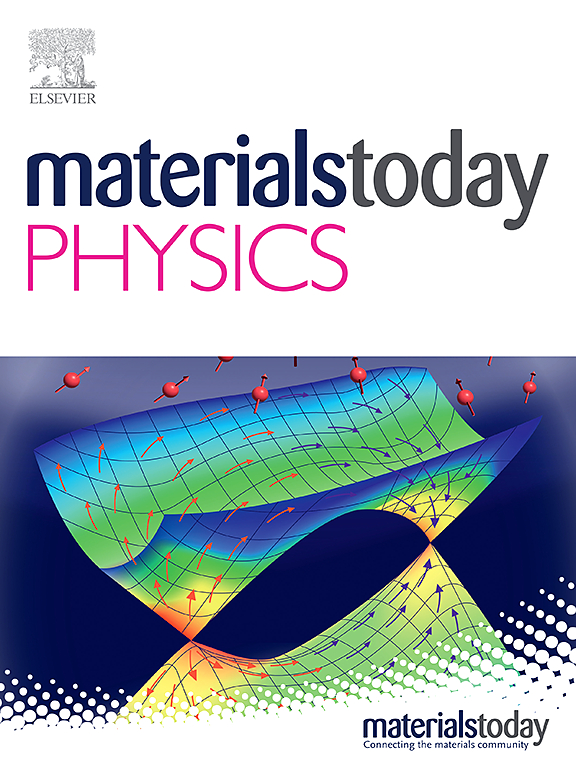通过掺杂钛来调节空位以获得n型高热电性能的PbSe
IF 10
2区 材料科学
Q1 MATERIALS SCIENCE, MULTIDISCIPLINARY
引用次数: 0
摘要
大多数高性能热电材料,如Bi2Te3、PbTe和SnTe,都依赖于昂贵而稀缺的元素,如碲,这限制了它们的实际应用。最近,PbSe已成为一个有希望的候选者,在900k时显示出较高的峰值值(ZT)。然而,由于Pb空位的地层能较低,PbSe本质上是p型的,阻碍了其n型变体的发展。本研究表明,在PbSe中加入钛可以使材料逆转为n型,进一步提高其热电性能。电子定位函数图和能带结构计算证实了Pb0.996Se-y%Ti样品中的P - N型跃迁。使用简单的合成方法,我们检测了Pb0.996Se-y%Ti的不同化学计量比(y = 1,3,5,7,10)。结果表明,钛含量在3%以上时出现n型特征,这与二次相TiSe的形成有关。在573 K时,pb0.9996 se -5% ti的ZT最高为0.64,在300 K至500 K时平均ZT为0.47,在300 K时达到28.6 μW K - 2 cm - 1的高功率因数,表明ti - PbSe在近室温下的能量转换应用潜力。本文章由计算机程序翻译,如有差异,请以英文原文为准。
Vacancy regulation to achieve N-type high thermoelectric performance PbSe through titanium-incorporation
Most high-performance thermoelectric materials, such as Bi2Te3, PbTe, and SnTe, rely on the costly and scarce element like tellurium, limiting their practical use. Recently PbSe has emerged as a promising candidate, showing high peak figure of merit (ZT) values at 900 K. However, PbSe is intrinsically p-type due to the lower formation energy of Pb vacancies, undermining the development of its n-type variants. This study reveals that incorporating titanium into PbSe can reverse the material to n-type and further enhance its thermoelectric performance. The electron localization function diagram and band structure calculations corroborate the P to N type transitions in Pb0.996Se-y%Ti samples. Using a straightforward synthesis method, we examined various stoichiometric ratios of Pb0.996Se-y%Ti (y = 1, 3, 5, 7, 10). Results show that n-type characteristics appear with titanium content above 3 %, linked to the formation of a secondary phase, TiSe. The highest ZT of 0.64 is achieved for Pb0.996Se-5%Ti at 573 K, with an average ZT of 0.47 from 300 K to 500 K, and high power factor of 28.6 μW K⁻2 cm⁻1 is reached at 300 K, indicating the potential of Ti-incorporated PbSe for energy conversion applications at near room temperatures.
求助全文
通过发布文献求助,成功后即可免费获取论文全文。
去求助
来源期刊

Materials Today Physics
Materials Science-General Materials Science
CiteScore
14.00
自引率
7.80%
发文量
284
审稿时长
15 days
期刊介绍:
Materials Today Physics is a multi-disciplinary journal focused on the physics of materials, encompassing both the physical properties and materials synthesis. Operating at the interface of physics and materials science, this journal covers one of the largest and most dynamic fields within physical science. The forefront research in materials physics is driving advancements in new materials, uncovering new physics, and fostering novel applications at an unprecedented pace.
 求助内容:
求助内容: 应助结果提醒方式:
应助结果提醒方式:


